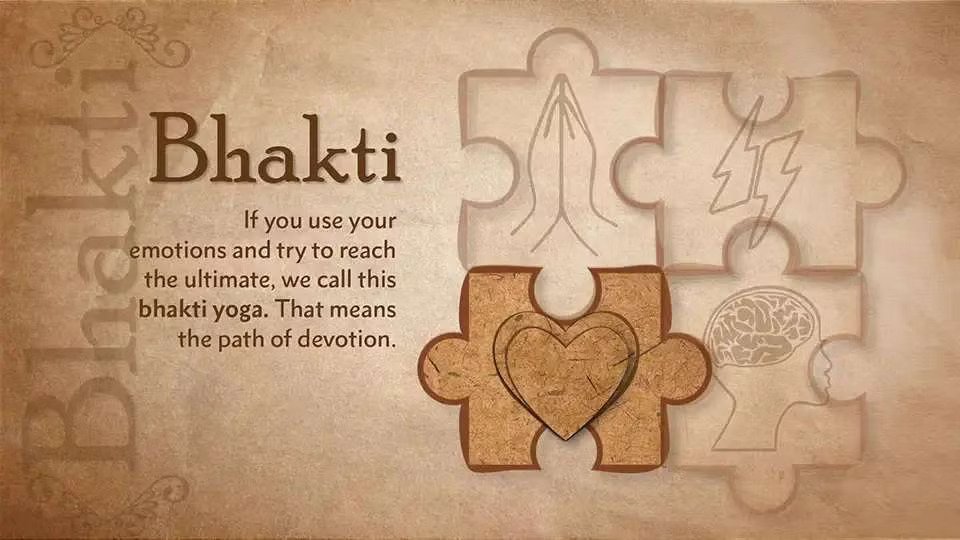


YOGA VEDANTA
It belongs to Hinduism. There are many hindu god concept with scriptures and theory from Bhagwat Gita and based on our vedas. This is a goal oriented yoga with the concept of god.
BUDDHIST YOGA
Buddhism is following the internal awareness yoga known as Raja Yoga. No practical Asans are involved in this type of yoga. There is no concept of god, it just follows the path of liberation.
PATANJALI YOGA
Maharishi Patanjali introduced this type of yoga form by taking the essence from Vedas and Raja yoga. This is the main and classical form of yoga which involves internal and external yoga with proper steps and guides.
TYPES OF YOGA VEDANTA
BHAKTI YOGA – It is known as the path of devotion. This path contains the various practices to unite the Bhakta with the divine. The deeply spiritual practice for the emotional and devotional people which draws heavily on the hindu pantheon of deities. There are nine practices of Bhakti Yoga (Nivabida Bhakti)

Bhakti softens the heart and removes jealousy, hatred, lust, anger, ego, pride and arrogance. It infuses joy, divine ecstasy, bliss, peace and knowledge. The ultimate goal of practicing bhakti yoga is to reach the state of ras (essence) a feeling of pure bliss achieved in the devotional surrender to the divine.
JNANA YOGA – Jnana is sanskrit word for ‘knowledge or wisdom’. It is the path of attaining knowledge of the true nature of reality through the practice of meditation, self-inquiry and contemplation. It is defined as ‘awareness of absolute consciousness’ and is a comprehensive practice of self study.
The fundamental goal of jnana yoga is to become liberated from the illusionary world of Maya (self limiting thoughts and perceptions) and to achieve the union of inner self (atman) with oneness of life (Brahman).
Jnana yoga or the science of self is not a subject that can be understood and realised through more intellectual study, reasoning, discussion or arguments. It is the most difficult of all sciences.

THERE ARE FOUR PILLARS OF KNOWLEDGE (SADHNA CHATUSHTAYA)
a) Viveka – ‘Discrimination’ is a deliberate, continuous intellectual effort to distinguish between the real and the unreal, the permanent and temporary, self and not-self.
b) Vairagya – ‘Detachment’ is cultivating non-attachment or indifference towards the temporal objects of worldly possessions and the ego mind. It is only when the mind is absolutely free from the attachments of all sorts, knowledge begins to draw.
c) Shatsampat – ‘Six Virtues’ are the six mental practices to stabilise the mind and emotions, and to further develop the ability to see beyond the Maya.
d) Mumukshutva – ‘Longing’ is an intense and passionate desire for achieving the liberation from suffering. In order to achieve liberation, one must be committed to the path with such longing that all desires fade away.
CORE PRACTICES OF JNANA YOGA
Prajanam Brahma – Brahman is the supreme consciousness. – Aham Brahmasmi – I am the self supreme.
– Tat Tvam Asi – Thou art that
– Ayam Atma Brahma – True self is the ultimate reality.
JNANA BHUMIKAS
KARMA YOGA
It is defined as the path of selfless action. The sanskrit word ‘Karma’ is derived from the root word ‘kru’ which translates as ‘work, deed or action.’
The foundation of karma yoga was laid in one of the first upanishad scriptures around 500 BCE. The yoga of action was further explained in Bhagwat Gita. Krishna explains the practice of karma yoga and links it to one’s fulfilment of dharma or personal duty.
RAJA YOGA
In sanskrit, word ‘Raja’ translates as king, chief or royal. The Raja yoga is viewed as the supreme or ‘royal path’ to attain enlightenment. Raja yoga proposes to start from the internal world, to study internal nature and through that, controls both the internal and external. It is often referred as ‘Classical Yoga’ yet one of the most difficult and challenging spiritual path. The practice of Raja Yoga was compiled by Maharishi Patanjali in his famous yoga sutras during the second century.